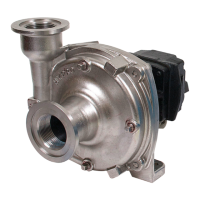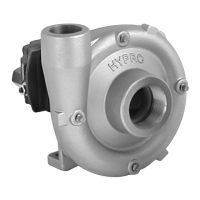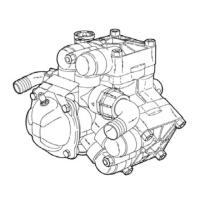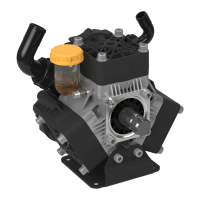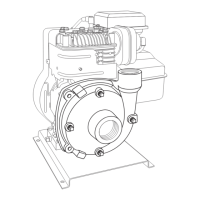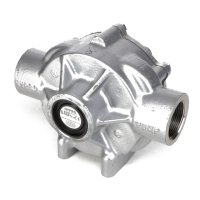-2-
1. Do not pump at pressures higher than the maximum
recommended pressure.
2. Maximum liquid temperature is 140
o
F for Series 9300
centrifugal pumps.
3. Disconnect power before servicing.
4. Release all pressure within the system before
servicing any component.
5. Drain all liquids from the system before servicing
any component. Flush with water.
6. Secure the outlet lines before starting the pump. An
unsecured line may whip, causing personal injury
and/or property damage.
7. Check hose for weak or worn condition before each
use. Make certain that all connections are tightly
secured.
8. Periodically inspect the pump and the system
components. Perform routine maintenance as
required (See Repair Instructions).
9. Use only pipe, hose and fittings rated for the
maximum psi rating of the pump.
10. Do not use these pumps for pumping water or other
liquids for human or animal consumption.
Notes are used to notify of installation, operation, or
maintenance information that is important but not safety
related.
Caution is used to indicate the presence of a hazard,
which will or may cause minor injury or property damage
if the notice is ignored.
Warning denotes that a potential hazard exists and
indicates procedures that must be followed exactly to
either eliminate or reduce the hazard, and to avoid serious
personal injury, or prevent future safety problems with
the product.
Danger is used to indicate the presence of a hazard
that will result in severe personal injury, death, or
property damage if the notice is ignored.
Do not pump flammable or explosive fluids such as
gasoline, fuel oil, kerosene, etc. Do not use in explosive
atmospheres. Components not rated for use with
Anhydrous Ammonia. The pump should be used only
with liquids compatible with the pump component
materials. Failure to follow this notice may result in
severe personal injury and/or property damage and will
void the product warranty.
1. Always drain and flush pump before servicing or dis-
assembling for any reason.
2. Always drain and flush pumps prior to returning unit
for repair.
3. Never store pumps containing hazardous chemicals.
4. Before returning pump for service/repair, drain out
all liquids and flush unit with neutralizing liquid.
Then, drain the pump. Attach tag or include written
notice certifying that this has been done. It is illegal
to ship or transport any hazardous chemicals with-
out United States Environmental Protection Agency
Licensing.
Never use your hand to check the condition of hydraulic
lines or hoses. If hydraulic fluid penetrates the skin, get
medical help immediately. Failure to get proper medical
help may result in loss of limb or life. The safest way to
check hydraulic lines or hoses is by holding a piece of
cardboard next to the hydraulic line or hose.
The sound pressure level of the pump is 80dBA. Observe
all safety precautions when operating the pump within
close proximity for extended periods of time by wear-
ing hearing protectors. Extended exposure to elevated
sound levels will result in permanent loss of hearing
acuteness, tinnitus, tiredness, stress, and other effects
such as loss of balance and awareness.
General Safety Information
Hazardous Substance Alert
L-1526 (12/12, Rev. B)
California Proposition 65 Warning -- This product
and related accessories contain chemicals known to the
State of California to cause cancer, birth defects or other
reproductive harm.

